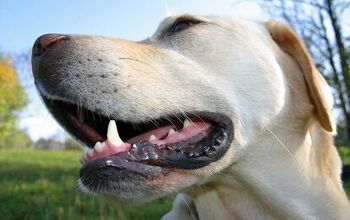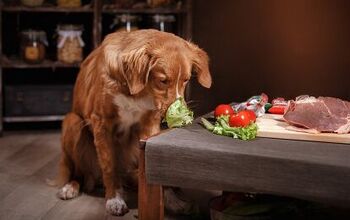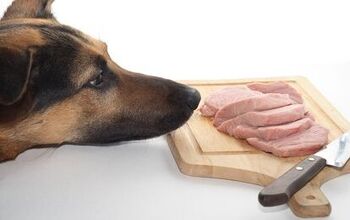7 Ways To Improve Your Pooch’s Dog Kibble

A high-quality dog kibble is a healthy meal for your four-legged friend, but that doesn’t mean you can spruce it up now and then. Some of these added extras will act as an extra tasty treat and others will help improve the nutritional content. Plus, some will do a bit of both. While it’s okay to add a small amount of “people food” to your dog’s diet, avoid anything that’s unsafe for canines.
- Soak it in Juice
Freshly juiced fruits and vegetables can be extremely good for your dog, containing a number of essential vitamins and minerals. A great way to improve dog kibble is to soak it in fruit and vegetable juice for half an hour or so, before serving. This will soften the kibble somewhat which some dogs prefer. Make sure to juice the vegetables and fruits yourself, as commercial juices aren’t as healthful. Don’t soak your dog’s kibble for every meal, as the crunchy nature of kibble helps clean plaque from your pup’s teeth.
Related: The Shocking Truth About Dogs and Garlic
- Add Essential Fatty Acids
Essential fatty acids – also known as omega 3 and omega 6 fatty acids – are good for dogs’ skin and coats and have been known to help tackle skin allergies in canines. You can buy commercial omega fatty acid supplements for dogs, but oils such as flax and hemp can also be added to food as a good source of omega 3 and 6.
- Add Vegetables
Adding vegetables into your dog’s kibble adds a real nutrient boost. Obviously the nutritional content depends on which vegetables you choose, but all vegetables add a variety of vitamins and minerals, plus some protein and fiber, to your pup’s dinner. Vegetables should be fed lightly steamed or raw. If feeding raw vegetables, make sure they’re grated finely for optimal digestion. High-fiber vegetables, such as winter squash, can do wonders for a dog’s digestion.
Related: 5 Safe And Tasty Human Food For Dogs
- Extra Protein
Be careful not to add too much extra protein to your pup’s diet, as dogs really don’t need an excessively high protein intake unless they’re extremely active. However, as an occasional treat, your dog might enjoy having some fish, lean meat, or even beans or legumes added to his kibble.
- Try Prebiotic Enzymes
Dogs have much shorter intestines than we humans do, which can make digestion more tricky. Prebiotic enzymes give dogs’ gut flora a well needed boost and can help dogs who have digestion issues. You can buy plant-based prebiotics – such as Optagest – that are specially made for canines. Add a little to your dog kibble each night to see an improvement in his digestive health.
- Add Chopped Herbs
Adding some finely minced herbs will give some extra flavor to your dog’s meals and can offer some other excellent benefits. Oregano is good for digestive troubles, such as diarrhea and gas. Rosemary is very nutritious, being high in vitamin B6, iron and calcium. Parsley can help freshen dog breath, and is also full of vitamins, minerals and antioxidants.
- Garlic
It’s a common misconception that garlic is toxic to dogs. Garlic is a member of the same family as onions, which are unsafe for dogs, and shouldn’t be consumed in huge amounts, but in reasonable doses it has several health benefits. These include: boosting the immune system, repelling fleas, lowering cholesterol and fighting bacteria. Just make sure you feed an appropriate amount for your dog’s weight. Consult your vet, if in doubt.

Lauren Corona is a freelance writer from merry old England. She specializes in writing about dogs and other critters. Lauren lives near Oxford, with her gorgeous Doberman, Nola. When she's not tapping away at the keyboard, you'll find her walking in the woods with Nola-dog, raising money for the Oxfordshire Animal Sanctuary, cooking vegan food, making zines and writing about herself in the third person.
More by Lauren Corona























